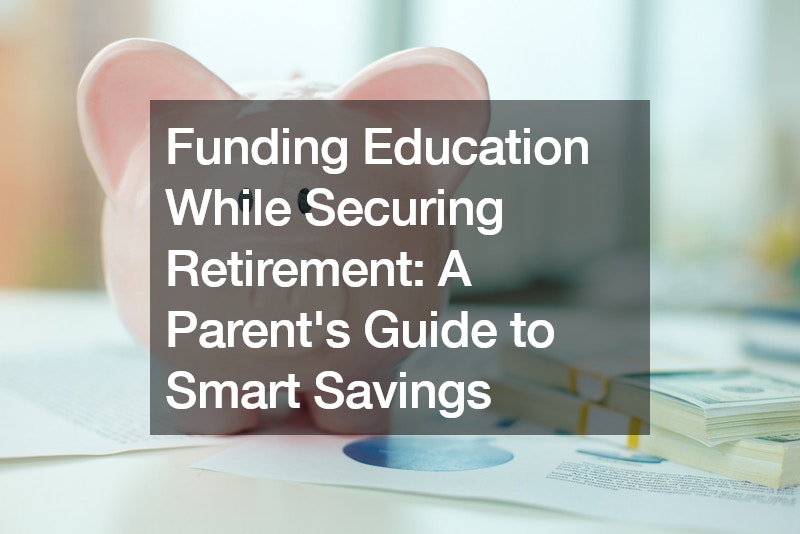
As parents, planning for your child’s future education while ensuring a secure retirement can feel like a daunting challenge. Both goals are crucial, and finding a balance is key to maximizing your financial well-being. Here are some expert tips on how to effectively manage your savings for both college education and retirement.
1. Start with a 529 Plan
One of the most effective ways to save for college is through a 529 plan. This tax-advantaged savings account allows your contributions to grow tax-free, provided the funds are used for qualified education expenses such as tuition, fees, and books.
On top of that, many states offer tax deductions or credits for contributions to their state’s 529 plan, making it a more attractive option for parents.
Advantages of a 529 Plan
- Tax-Free Growth: Earnings grow federally tax-free and are not taxed when withdrawn for qualified education expenses.
- State Tax Benefits: Many states offer tax deductions or credits for contributions to their state’s plan.
- High Contribution Limits: Unlike other savings accounts, 529 plans typically have high contribution limits.
- Flexibility: Funds can be used at most accredited colleges and universities, including some international institutions.
To maximize the benefits, consider contributing enough to get the maximum state tax deduction. Then, if you have additional funds to invest, you can explore other 529 plans that may offer better investment options or lower fees. Websites like savingforcollege.com can help you compare different plans and find the best fit for your financial situation.
2. Prioritize Your Retirement Savings
While it’s natural to want to prioritize your child’s education, it’s crucial to ensure your own financial security first. Think of it like the safety instructions on an airplane: you must put on your own oxygen mask before assisting others. The same principle applies to savings; make sure your retirement plan is robust before diverting funds to college savings.
Key Points for Retirement Savings
- Maximize Employer Contributions: If your employer offers a 401(k) match, contribute enough to take full advantage of this free money.
- Automate Contributions: Set up automatic contributions to your retirement accounts to ensure consistent savings.
- Diversify Investments: Ensure your retirement portfolio is well-diversified to manage risk and maximize returns.
- Catch-Up Contributions: If you’re over 50, take advantage of catch-up contributions to boost your retirement savings.
Remember, your children can take out student loans for their education, but there are no loans available for retirement. Ensuring you have a solid retirement plan in place is not only beneficial for you but also for your children, who will not have to worry about supporting you financially in your later years.
3. Explore Creative Saving Strategies
There are numerous ways to save for college that go beyond traditional methods. One effective strategy is to get family members involved. Grandparents, aunts, and uncles can all contribute to a 529 plan, making it a family affair. This not only eases the financial burden on you but also allows relatives to invest in the child’s future.
Another creative approach is systematic investment. By setting up automatic, recurring contributions to your savings accounts, you can leverage the power of dollar-cost averaging. This technique reduces the impact of market volatility and can lead to more consistent investment growth over time.
Family Involvement and Systematic Investment
- Family Contributions: Encourage family members to contribute to the 529 plan. Many plans allow third-party contributions, which can significantly boost the savings.
- Automatic Contributions: Set up automatic transfers from your checking account to your savings accounts to ensure regular contributions.
- Loan Repayment Plans: If you lend money to family members, consider having repayments automatically deposited into your child’s education fund. This can ensure timely payments and steady growth of the fund.
4. Balance and Adjust as Needed
Balancing college and retirement savings is not a one-time task but an ongoing process. Regularly review and adjust your financial plans to stay on track. Life events, changes in income, and shifts in your goals may require you to re-evaluate your saving strategies. This also includes accounting for new educational expenses such as enrollment in a tuition centre.
Tips for Ongoing Management
- Annual Reviews: Review your financial plan annually to make adjustments based on changes in your financial situation or goals.
- Professional Advice: Consider working with a financial advisor to help balance your savings strategies and ensure you’re on the right path.
- Stay Informed: Keep up with changes in tax laws and savings options to maximize your benefits.
In Closing
By implementing these strategies, you can achieve a balance between saving for your child’s college education and securing your own retirement. It requires careful planning, regular review, and sometimes a bit of creativity, but the peace of mind knowing that both goals are being met is well worth the effort.
.

